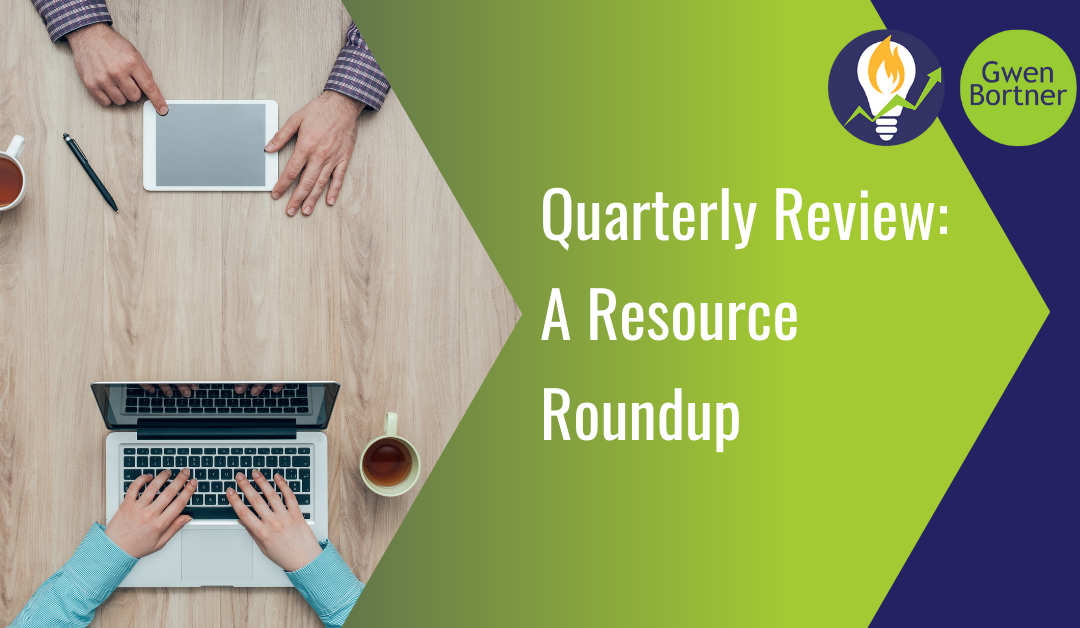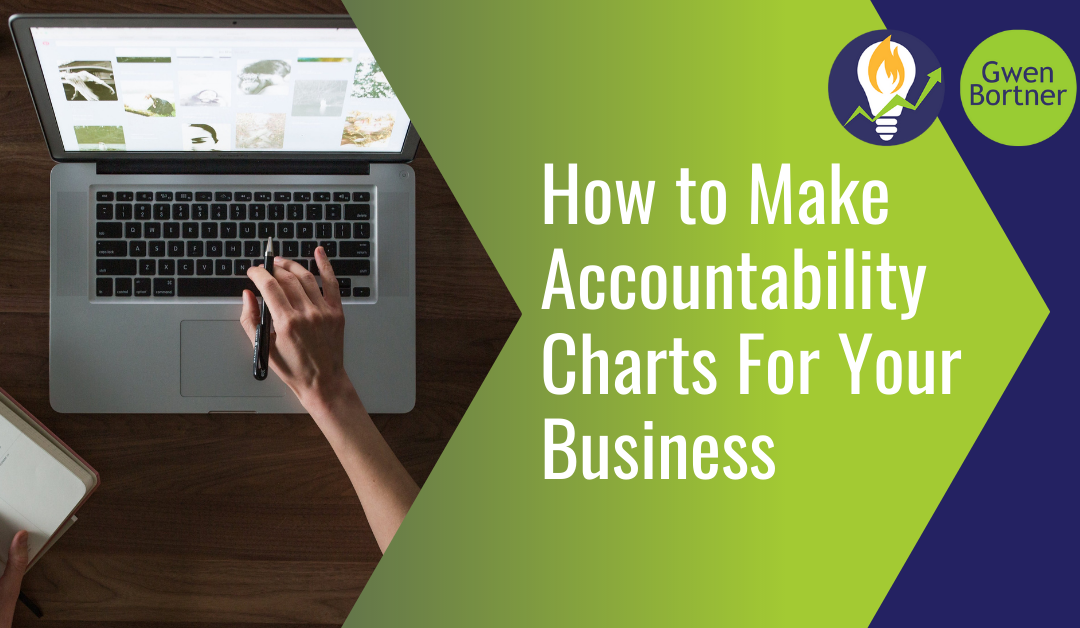
by Gwen Bortner | Operations, Tips & Tricks
There’s a reason we have the term “growing pains” in our collective vocabulary: growth can be painful! In your business, the periods that are the most stressful and overwhelming are usually also the periods where you experience the greatest growth and forward momentum. That’s why it’s even more important to have a clear strategy during those times, so that you can focus on one step at a time, keep your wits about you, and power through the painful period in order to come out victorious on the other side.
Though there are several reasons you might be experiencing growing pains in your business, in my work with entrepreneurs I’ve found that there is some common ground here. If you’ve experienced painful growth in these areas, know that you are not alone! This is an experience shared by almost everyone who has ever tried to run a business.
4 Ways Growth Can be Painful in Your Business
1- Hiring Your Team
When you hire another person in your business, the sense of overwhelm usually comes down to two factors: finances and operations. Whether it’s your first hire or your 15th, expanding your team can absolutely cause some growing pains in these areas.
- Finances: You may never feel like you’re “earning enough” in your business to pay someone else, but when most entrepreneurs get to the point of needing to hire someone else, it’s because they have simply hit a plateau. They cannot earn more money on their own, because they just can’t take on any additional workload. Hiring someone else—and paying them for that work—is often a financial hit at the beginning. Soon, however, you realize that by paying that person to take on some of your workload, you’ve freed yourself up to move to the next income level as a result. This is true of every new hire, so you should expect a little bit of financial strain each time, but it should resolve itself shortly.
- Operations: There’s a learning curve at the beginning of the hiring process every time. The new person needs to learn the steps and skills of their duties, but you also need to learn how to explain those steps and skills to another person. If you’ve been doing the work yourself, chances are you haven’t written out an onboarding process for that, because you just knew what to do all along. Now you’re going to have to invest some time up front to train your new hire; but once you’ve done that, having them take over that work is going to save you significant time in the future.
Hiring a new team member is painful because it requires an up-front investment of time and money, without an immediate return on that investment. However, if you’re playing the long game toward sustainable growth, this investment is absolutely worth it.
2- Unexpected Growth
Sometimes, growth just sneaks up on us out of nowhere. You may find yourself mentioned by a key influencer on social media, or your clients have all decided to refer new business your way at the same time, or perhaps you’ve just gained enough traction that you’re starting to see the natural momentum in your business increase.
Whatever the source of your unexpected growth, it can feel like one day you were just cruising along at ground level, and the next you’re expected to know how to fly at top speeds. It will take some time to reorganize your systems around this growth, and to make a plan for how to address it in the long-term. Having a reliable, repeatable procedure for tackling goals and To Dos is key to riding the waves of unexpected growth in your business.
3- An Influx of Clients
Remember a few months ago, when you were hoping you could round out your client roster a little more fully? Now, all of a sudden, you have more clients than you know how to manage! It can feel like this type of growth comes in surges, and often we don’t realize our maximum capacity for handling client work until we reach that capacity.
If you’re at this point, you have a few different options available to you:
- End your relationship with any clients who are not an ideal fit, in order to make space for new clients who are more aligned with the type of work you want to do or the type of working relationship you want with your clients.
- Hire new contractors or employees to help you manage the workload
- Raise your prices so that you can afford to work with fewer clients; those who aren’t able to retain your services at that price point will naturally fall off, and the ones who remain will allow you to work less but earn the same or more income.
While an unexpected influx of new clients can throw you for a loop at the start, it often provides an opportunity to shift or pivot your business to a point where you are earning more income or doing the type of work that is more in line with your desired workday.
4- A Significant Life Change
You may be a business owner, but you’re also a human being, and that means that occasionally the changes in your personal life are going to affect your business. Some of these life changes may include:
- Divorce, marriage, or new romantic partnership
- Becoming an “empty nester” for the first time
- Having a child
- Retirement for you or your spouse
- Moving or beginning life as a digital nomad
Having a system in place that you follow regularly in your business can mean that you are ready when these life changes arise. You can make a plan to give yourself time to transition through the change, to re-evaluate your goals, and move forward with your new life status and your business.
No matter the scenario, early preparation is the key for navigating unexpected changes in your life and business so that you can reduce the amount of overwhelm you feel in the moment and keep moving forward with a clear plan. If you’d like to be prepared for whatever life and business throw your way, I invite you to join me in my workshop, “3 Strategies to Minimize Overwhelm, Reduce Stress, & Produce Results that Matter.” We’ll work together to set you up with a system that you can follow any time your business gets overwhelming, so that you can get back to work and back on track to reach your goals.
Register now to join me for the workshop, happening September 9th from10:30 AM TO NOON PT.
I look forward to seeing you there!

by Gwen Bortner | Leadership, Marketing, Operations
Recently I wrote an article for APeeling Magazine about how to get out of your head when you’re faced with an important decision. Today I’m sharing some similar ideas, but if you’d like to read the original article, click here.
I’ll bet if I asked you to track all the decisions you make in any given week, the number would easily be in the double digits. And that isn’t counting all simple, mundane decisions we make every day. As the CEO of a company, some of the decisions you make are small and simple – there’s an obviously right choice, and it only takes a few minutes of your time. However, there are also those other decisions, the ones that carry more weight or don’t have an obviously right answer, that tend to suck away all of your time and energy for longer than you’d like. If you’ve ever been lost in the weeds of making an important decision, today’s post is for you.
Chances are your decision-making struggle is caused by one or more of the following scenarios:
Outside Pressure
In this situation, you’re struggling to make a decision based on what other people think you should be doing, or your perception of what others will think. If there’s outside pressure pushing you in a certain direction, but your inner voice is telling you that’s not the right solution, it causes conflict. How much easier would life be if we could reject the idea of outside pressure, and just make decisions based on trusting our gut or knowing what we want? Unfortunately, most of us do struggle to meet outside expectations, so this can be a very real problem.
Want vs. Should
You may be struggling because there’s something you know you should do, but you really don’t want to do it. Or vice versa – there’s something you want to do, but it feels like something you shouldn’t be spending your time on. This might be a “suck it up” moment where you really just have to bite the bullet and do the unpleasant thing, even if it isn’t fun or exciting.
Feelings vs. Facts
In this scenario, chances are you know what you need to do, but you’re afraid of hurting someone else’s feelings by making this choice. A similar situation is one where you don’t want to have to inconvenience anyone else to make this decision possible, so you’re afraid to ask them for help. It might help to think about what you’re losing by not making this choice, or what you would lose if you didn’t ask for the help. It can help to have data to help you make the choice that will involve a difficult conversation.
Equal Footing
Sometimes a decision is really hard because it’s either a decision between two good choices or between two bad choices. If you can only choose one thing out of two great options, it can be hard to pick one because you’ve got a fear of missing out on the other option. Conversely, if you’re stuck between a rock and a hard place, neither option feels very appealing. In this case, you probably have to go with what feels the most right (or the least wrong), and just move on.
Alignment with Your Goals
Maybe what’s holding you back from making a decision is that somewhere, your gut is telling you that this decision isn’t really in line with what you need to be working on right now. If you’ve been following a system of setting goals in your business, is this decision going to bring you closer to your current goal, or distract you from it? If you’ve been feeling reluctant but you aren’t sure why, check in with yourself and your goals to see if this decision is truly in alignment with where you should be focusing right now.
Usually, the things that hold you back from making a quick decision are somewhat intertwined. Chances are, you’re actually dealing with more than one of these scenarios at once. The biggest obstacle is identifying what holds you back; once you can do that, it becomes a lot easier to find a solution and move forward.
The next time you’re stuck in the middle of a choice that’s too difficult for you, try identifying what’s holding you back and acknowledging the problem first. Then, make a list of your options so that you can evaluate them and pick the one that’s best for you. As the CEO of your company, you have to hold yourself accountable to making the best decisions that you can, given the tools and resources at your disposal. It isn’t always easy or fun, but it’s necessary if you want to keep moving forward in your business.
If you need some help identifying the greatest area of need in your business, the GEARS assessment can help! Click here to take this free assessment to determine the strengths and weaknesses in your business, so that you can choose the best options to focus your time and energy on for the upcoming quarter.

by Gwen Bortner | Leadership, Operations
For my entire life as an entrepreneur, one thing that I really geek out over is quarterly review & planning sessions. I just love the clarity I find in these sessions that helps me take an honest look at where I’ve been, the momentum it builds to set goals for my future, and the security of knowing I have a solid plan to carry me forward for the next three months.
Since this has been one of my favorite topics for years, I’ve written quite a lot of information about it! So today I’m rounding up some of my favorite posts, in the hopes that they might inspire you to find some motivation around your own quarterly planning.
Want some advice and tips for quarterly planning? Check out these posts…
If you want to DIY a quarterly planning process for yourself, these resources should be pretty useful to you in that process. However, if you’re looking for something a little more useful, I’d love to invite you to join me for the Quarterly Tune Up.
The Quarterly Tune Up is my goal-setting program for successful CEOs and entrepreneurs who want to…
- get clear on where they’ve been and face the facts of their current business situation.
- use a customizable system to set goals that are authentic to their own needs and dreams.
- have the support and inspiration that comes from brainstorming with like-minded entrepreneurs and surround themselves with others who totally “get it.”
- hold themselves accountable with as much or as little pressure as they need from an outside source in order to take the action required to achieve their goals.
- carve out time each quarter to work on their business goals and take the regular action required to get to the next level.
Interested in how Quarterly Planning can help you achieve the goals you have for your business? Join us April 6th & 7th, 2022, for the Quarterly Tune-Up!

by Gwen Bortner | Leadership, Operations
Do you ever finish out your work day and wonder where the time went? Do you feel like you’re not really accomplishing very much, even though you’re working all day? Chances are you’re losing crucial time in your business trying to do too many different tasks, or manage too many different people. A solution for this problem is to create an accountability chart for your business.
An accountability chart is like an organizational chart, but with one key difference: an accountability chart focuses on what people are going to be accountable for rather than just listing their job description. I would love to take credit for this idea, but the first time I was exposed to it was in the book Traction by Gino Wickman.
Creating an accountability chart will help you get clarity on who’s doing what, but also help you step back and take accountability only for the tasks you’re supposed to be handling as the CEO. For everything else, your only job is to hold your people accountable for what they owe you.
How to Create an Accountability Chart in Your Business
Step 1: List the tasks that must be completed in order to run your business.
You can group these into different areas, but don’t let yourself get boxed into existing job descriptions or the people who are currently working for you. Think only about the actual tasks that need to go on somebody’s To Do list in order for your business to keep running every day. List them all.
Step 2: Group those tasks into roles.
Think about the most logical way to combine those tasks into roles, or job descriptions. No matter how you’ve done it in the past, this is a chance to invent the best practices that will carry your business forward. If someone is doing Task A, which other tasks are the most logical for them to take on as part of their role in your company?
Step 3: Define the accountability for each role.
What is the deliverable outcome for each job description? What will that person need to be accountable for producing as they complete those tasks? You may also want to use this step to put a time frame on this accountability: how frequently do these tasks need to be completed for maximum results? Is there any flexibility on this, depending on the person you eventually hire to fill this role?
Step 4: Determine the number of hours or people needed to fill this role.
It’s only natural that the roles you have in your business will grow as your business does, but think about right now: how many hours per day or week would it take someone to fulfill the duties of each role? Chances are, when you’re just starting out, one person (maybe even you) can take on several roles at once. It’s still important to define them as separate roles, though, so that as the business grows that person can pass off some roles to other people and fill more of their time doing fewer jobs.
Step 5: What is the appropriate accountability structure?
This is where the accountability chart starts to look more like an organizational chart. A Chief Financial Officer role may also be accountable for ensuring the roles of Bookkeeping and Payroll Tax Preparation are being fulfilled. And right now, those roles all may be the same person. However, as your business grows, those roles may be taken over by other people. Keep in mind, we are designing for the future, not just the present.
Step 6: Share as needed.
Everyone who works for you doesn’t need a detailed job description for every other person in the business, but they do need at least a baseline of information. If I’m your employee, I need to know my own job in pretty strong detail so that I make sure to complete my tasks and maintain the things I’m accountable for. I also need to know who I report to with questions, problems, and results. For everyone else in the business, I just need to have a basic idea of their role so that if an item comes across my desk that should really be theirs, I know where to forward it.
As you develop your chart, remember that accountability is key. You don’t want “too many cooks in the kitchen,” or too many folks who are accountable for the same thing. The higher up you go on your chart, the fewer people should be accountable for each outcome. Fundamentally each role should be able to be summarized by 3 – 5 bullet points.
It may seem unnecessary if you’re still at the stage of business where you’re doing most of the work, or you only have 1 or 2 employees or contractors. However, having clear roles now means it’s easier to grow your business down the road, because you can hire people according to their strengths. If one person is balancing multiple roles right now, they can eventually give away the ones that aren’t firmly in their wheelhouse in order to focus on the ones that are.
If you need some help identifying the roles in your business and holding your team accountable for their tasks, come join us in the Operations Engine. You’ll get support from other CEOs like yourself, with guidance and advice from me every step of the way. Click here to schedule a call for more information.
(PS: if you’d like to dig deeper into this topic, I really recommend the book Traction: Get a Grip on Your Business, by Gino Wickman. It has some really practical advice for how to get a handle on your business operations.)

by Gwen Bortner | Operations
How many assumptions do you make about your business on a regular basis? Do any of these sound familiar to you?
- I’m pretty sure I’m on track to meet my goals this quarter.
- It feels like my numbers are about the same as they were last year.
- I haven’t gotten any red alert notices from my bank, so I assume my financials are fine.
- It seems like my clients are happy with the work I’m doing.
- I’m pretty sure my employees are doing the work I’ve asked them to do.
Running your business on assumptions is a dangerous game. If you’re assuming everything is okay, you’re letting yourself off the hook. You need to stop assuming and start knowing.
So, what’s it going to take for you to know that your business is on track to meet your goals, rather than just continuing to assume you’re going to make it?
Ask yourself the following questions:
What do I need to track?
Consider the most important metrics in your business: financials, sales, new clients, referrals, or whatever it is that usually brings you the most growth. Remember these metrics don’t have to be “typical” measures, they just need to be drivers of your goals. Those are the metrics you need to be tracking regularly.
What are my goals for each of those metrics?
Once you know what to track, set a goal for each one. Pick a goal that you can meet within the next quarter, so that it will be easier to track and you’ll see results in a shorter amount of time.
How often do I need to track these things?
You want to track each area often enough that you can see progress when it happens or catch problems when they occur. However, the balance to that is that you don’t want to track so often that it seems like you’re not making any progress at all, because that can be disappointing. (Think of it like weight loss: if you measure your weight every day it can be difficult to see progress, so once a week is a more reasonable time frame.) So this might be daily, weekly or monthly.
How will I hold myself accountable?
You need to hold yourself accountable for actually tracking the metrics, but also for reaching your goals. It doesn’t need to be fancy, it just needs to be used consistently and deliver the information you need. Celebrate the wins and if you notice a backslide in any particular area, make sure that you take the time to work on that area and don’t just let it continue to falter.
How will I hold others accountable?
Some of the areas you’ll want to track may fall under the responsibility of other people who work for your business. If one of your employees isn’t meeting their goals, it’s your job to hold them accountable for that and also to support them in making corrections. If it comes to it, it may also become your job to let them go if they’re consistently not meeting your expectations.
You are the CEO of this business; if you don’t hold yourself accountable for meeting your goals, how can you expect the other people who work for you to do the same? So you probably need to have a few metrics to track too. Stop guessing, start knowing, and don’t hold back on keeping everyone accountable for meeting the goals you’ve set for your business.
If you need a little help in this area, accountability is my specialty! I work with CEOs to hold them accountable for doing the work that’s going to bring them the results they’re after. I won’t sugar-coat things, but I will give you options, advice, and support when you need it. If that sounds like something you need, click here to schedule a call and learn more about the Operations Engine, my group coaching program for CEOs who are ready to be accountable for their goals.

by Gwen Bortner | Operations
In case no one has told you recently: it’s okay to take some time to stop focusing on growing your business all the time, and just focus on maintaining what you’ve built. If you believe a lot of the “experts,” growth should be your only business goal; if you’re not growing, they’d have you believe you’re failing. The truth is, however, that 100% growth 100% of the time just isn’t sustainable – and if your business isn’t sustainable, that’s the real problem.
You may find yourself reaching the point where you’re very comfortable with your business where it is right in that moment, and you’re ready to just keep that level going. Other times, you may need to take a season or two to just hold your business where it is, because the things going on in your life outside of work need more of your attention. In any case, sustainability is a perfectly acceptable business plan. Being in a constant state of stress about your business is the thing that’s really not sustainable; if that’s where you are, it might be time to take a step back and focus on maintenance.
Questions to ask yourself when you’re evaluating the sustainability of your business:
1. Does my income meet all of my financial needs? Whether you want your business to supplement a household income or pay every bill, is it able to do that every month with consistency?
2. Am I happy with my income? Do you feel good about what you make, and do you feel it’s worth the amount of time and effort you’re putting into your business in order to earn that income?
3. Am I able to maintain my desired lifestyle? Remember, YOU get to decide what success looks like in your business, so now it’s time to decide: do you feel successful with the income you’re earning?
4. Am I working a schedule I’m comfortable maintaining in the long term? Does your business schedule suit your lifestyle? Are you working a reasonable amount of hours, or working yourself to death? Can you keep up with your current pace over the next several years?
5. Am I happy with the people I work with? This includes your clients or customers, employees, contractors, colleagues, and mentors. Are you surrounded by people who light your enthusiasm from within? Do you enjoy the people you communicate with in order to run your business?
6. Am I confident and content with the actual work I do? Think about the daily tasks you have to complete in your business as well as the services you offer your clients. Do you actually enjoy doing those things, day in and day out? Would you be happy doing them for the next five or ten years?
7. If I lost a client or customer, could I replace that income? The thing about sustainability is that it does require some growth; however, instead of growing bigger each year, you’re just growing to replace anything that changes or is lost. If you are able to replace clients when you lose them, then you have a sustainable business.
Once you can say “YES” to the questions above, then you’ve got a sustainable business. It’s time to just keep doing the work you’ve been doing, growing to replace or replenish rather than to increase and expand. Make sure to check in regularly with your measurable outcomes so that you know you actually are sustaining your current level of business, and you’re good to keep going for the next season or all the seasons to come, whatever you choose to do.
If you’re not quite able to confidently answer those questions, I’d love to help! Click here to schedule a call and see if for the Operations Engine, a group coaching program where we will work on fixing any misaligned GEARS in your small business. We’ll figure out where you need to make any necessary changes in order to get your business to full sustainability, and also identify the areas that are already working exactly how they should be.







